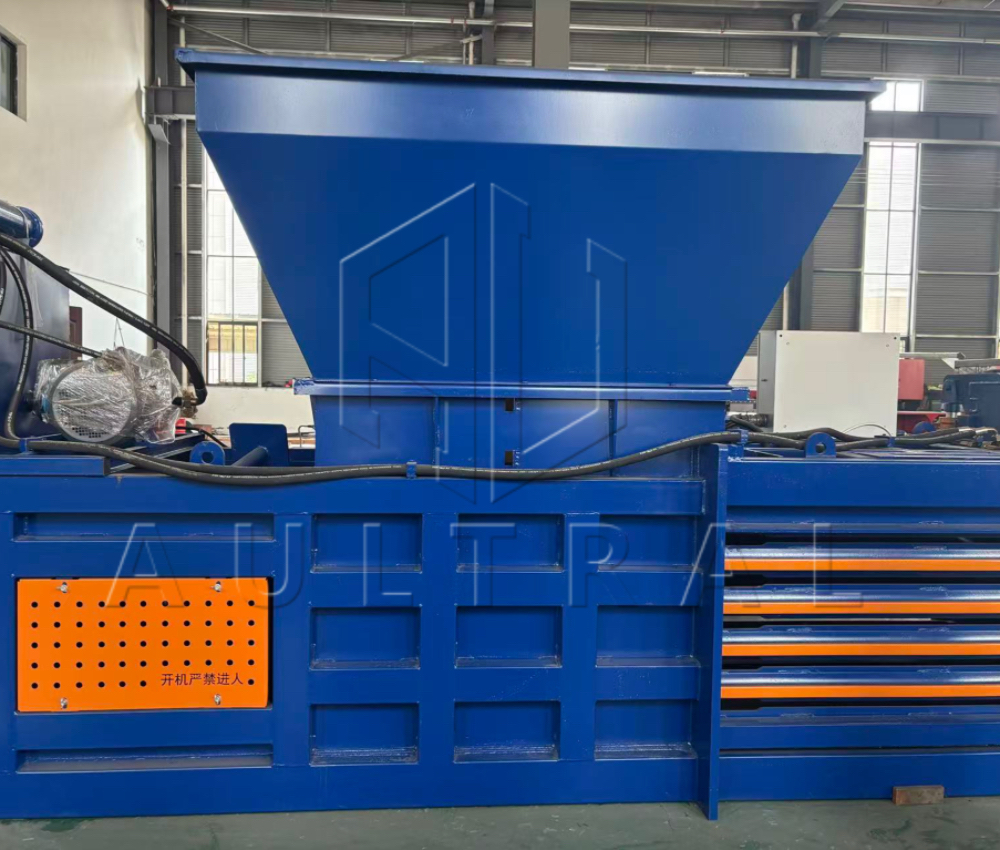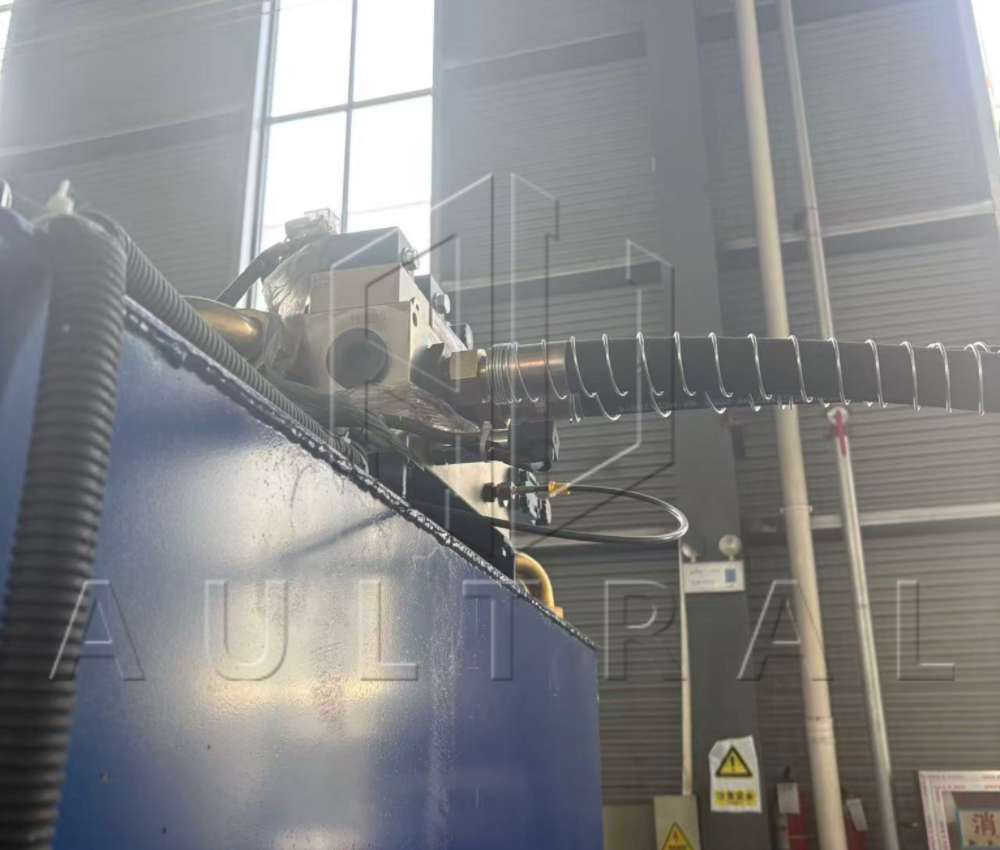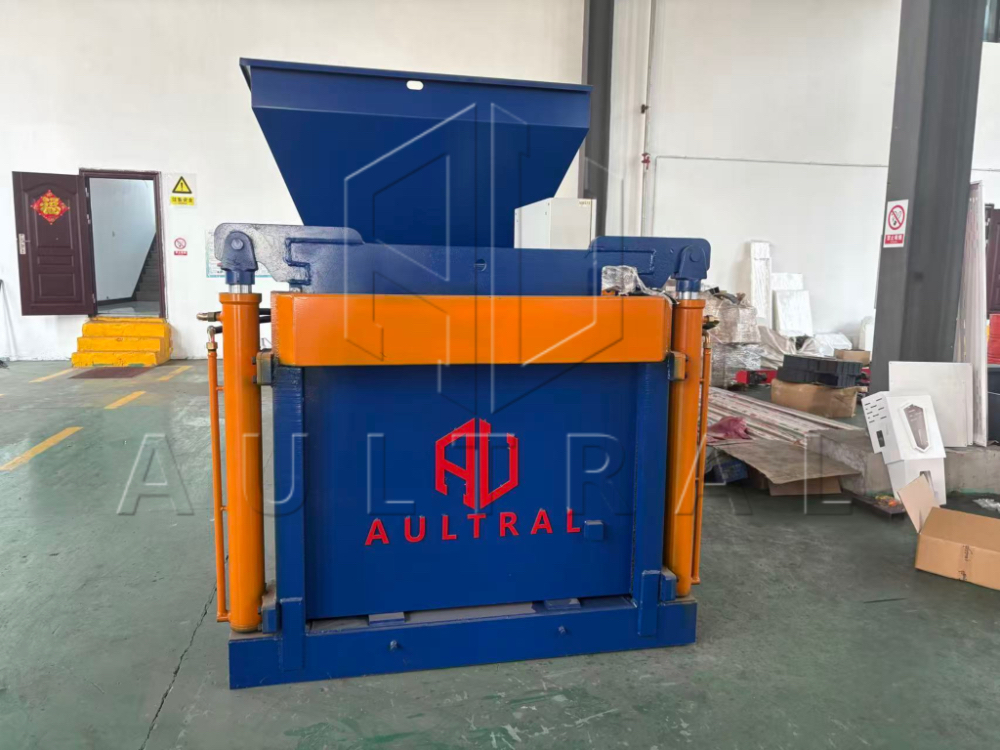What Is A Horizontal Baler?

A horizontal baler, also known as a press baler, is a machine designed to compress and compact waste materials into dense, uniform bales. These machines are widely used in recycling centers, warehouses, factories, and distribution hubs to handle various types of waste, including cardboard, paper, plastics, textiles, and metals. By compacting loose materials into bales, the baler helps reduce storage space, streamline transportation, and improve material handling efficiency.
Horizontal balers can handle a continuous flow of materials, making them ideal for large-scale operations. Unlike vertical balers, horizontal balers have a horizontal compression chamber, which allows larger volumes of material to be processed at a time. Some advanced models also feature automatic feeding systems, hydraulic presses, programmable bale sizes, and adjustable pressure settings to meet specific operational requirements.
In addition, horizontal balers can be customized to suit the specific type of material being processed. For example, balers designed for plastic films can have reinforced rams and slower compression cycles to prevent jamming, while cardboard balers can be optimized for higher throughput. This flexibility makes horizontal balers a practical solution across multiple industries.
Why Use A Horizontal Baler?

Using a horizontal baler provides several key benefits for businesses and recycling operations:
-
Space Efficiency
Loose waste materials often occupy a lot of warehouse or factory space. A horizontal baler compresses these materials into compact bales, freeing up valuable storage areas and improving workflow organization. Efficient space utilization can also allow companies to handle more waste without the need for additional storage facilities. -
Cost Reduction
By reducing the volume of waste, baled materials are cheaper to transport and handle. This leads to savings in shipping costs, labor expenses, and storage fees. Additionally, well-compressed bales reduce the frequency of waste removal, further lowering operational costs. -
Environmental Responsibility
Compressing and recycling waste supports sustainable practices and reduces the amount of material sent to landfills. Companies can demonstrate their commitment to environmental protection, which is increasingly important for corporate responsibility and regulatory compliance. -
Operational Efficiency
Horizontal balers can process large quantities of waste continuously, reducing the need for manual handling. This not only speeds up operations but also reduces labor risks and improves workplace safety. With programmable settings, operators can adjust bale density, size, and pressing speed according to operational demands. -
Revenue Potential
Baled waste materials are easier to sell to recycling companies or scrap buyers. Well-compacted bales maintain consistent size and weight, making them attractive for resale and helping companies generate additional revenue from recyclable materials. Some businesses even combine waste collection and baling into an integrated revenue stream. -
Durability and Reliability
Modern horizontal balers are designed with heavy-duty frames, robust hydraulic systems, and wear-resistant components, ensuring long service life even under continuous heavy use. This durability reduces downtime and maintenance costs, making it a reliable long-term investment.
How Does A Horizontal Baler Work?

A horizontal baler works in several coordinated steps, combining mechanical and hydraulic processes:
-
Material Loading
Waste materials are loaded into the horizontal chamber, either manually or using an automatic conveyor or feeding system. Large-scale balers can accept high volumes of materials continuously without stopping the process. -
Compression
The hydraulic press pushes the material horizontally against the chamber wall, applying enormous force to compress the material into a dense, compact form. The dual-cylinder design in many models provides extra stability and ensures uniform bale density. Advanced balers may include pressure sensors to adjust the compression force automatically based on the material type. -
Binding
Once the material is compressed, the machine uses wire, strapping, or bands to tie the bale tightly. This ensures that the bale maintains its shape during storage and transport. Some models also have automatic tying mechanisms, reducing manual labor and speeding up production. -
Ejection
After binding, the compressed bale is ejected from the chamber, either automatically or manually, depending on the model. Finished bales can then be stored or transported for recycling or resale. Certain balers are compatible with forklifts or automated conveyors, enabling seamless handling of heavy bales. -
Maintenance and Safety
Regular maintenance, including lubricating moving parts, checking hydraulic systems, and inspecting binding mechanisms, is essential for long-term performance. Modern horizontal balers also come with safety features like emergency stop buttons, protective guards, and automatic overload protection, ensuring operators can work safely even in busy industrial environments.
Types Of Horizontal Balers
Horizontal balers can be classified based on feeding method, pressing mechanism, and application:
-
Manual Feed Balers: Require operators to load materials manually. Suitable for small to medium-sized operations.
-
Automatic Feed Balers: Equipped with conveyors and hoppers for continuous material input. Ideal for large-scale recycling centers.
-
Single-Cylinder vs. Dual-Cylinder: Dual-cylinder balers provide more stable pressing force and are often preferred for heavy-duty applications like plastic, cardboard, and metal scrap.
-
Specialized Balers: Some models are tailored for specific waste types, such as thin plastics, aluminum cans, or cardboard, with customized press speeds, bale sizes, and hydraulic configurations.
Applications Of Horizontal Balers
Horizontal balers are versatile and widely used in different industries:
-
Recycling Centers: Paper, cardboard, plastics, and metals.
-
Manufacturing: Collecting production scrap and reducing waste volume.
-
Retail & Distribution: Managing packaging waste from stores or warehouses.
-
Agriculture: Compacting organic waste like straw or crop residues for easier handling.
-
Waste Management Companies: Preparing materials for transport and resale efficiently.
Horizontal balers not only improve operational efficiency but also support circular economy initiatives, helping businesses convert waste into reusable or recyclable materials.
Conclusion
A horizontal baler is an essential tool for any business that needs to manage large volumes of waste efficiently. By compressing loose materials into compact bales, horizontal balers save space, cut costs, improve safety, support sustainability, and create new revenue opportunities. With advanced features like automatic feeding, programmable settings, dual-cylinder compression, and durable construction, horizontal balers can handle a wide variety of materials, from cardboard and paper to plastics and metals.
Whether you operate a small recycling facility, a large industrial plant, or a distribution center, choosing the right horizontal baler can transform your waste management process, making it more organized, efficient, and profitable. Investing in a reliable horizontal baler is not only a smart operational decision but also a step towards sustainable and responsible business practices.
